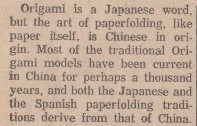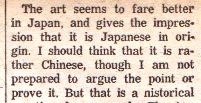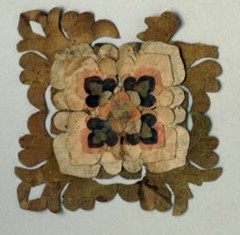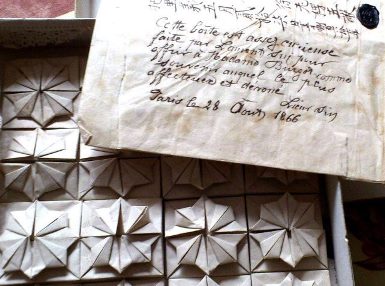| The Public Paperfolding History Project
x |
|||||||
| A Brief History of Recreational Paperfolding in China prior to Cross-Fertilisation (up to 1902) | |||||||
Introduction The theory of a Chinese origin for recreational paperfolding In 1965, a profile of Philip Shen (a paperfolder of Chinese descent, who was born in Manila in the Phillipines) which was published in Vol 5: Issue 2 of 'The Origamian' for Summer 1965, asserted his belief that recreational paperfolding had a Chinese origin and specifically that 'both the Japanese and the Spanish paperfolding traditions derive from that of China':
The same issue contains an article 'Paper Folding as a Folk and Creative Art', written by Philip Shen himself, which contains similar assertions. However, no evidence to back up these assertions is given in either case and, indeed, Shen is clear that to him it is a matter of faith rather than of evidence:
However, despite this, it seems to have become widely accepted that Philip Shen was correct and that recreational paperfolding began in China rather than in Japan or Western Europe. In fact the opposite seems to be true. The evidence we have at present strongly suggests that recreational paperfolding was introduced into China from Japan and the USA, through the medium of kindergarten and elementary school education, in the early 20th century. It is however plausible that some recreational designs were being folded in China at an earlier date. Our evidence for early recreational paperfolding in Japan comes largely from ukiyo-e woodcut prints, which were often published in books, many of which are precisely dated. There is no similar source of information from China, and we are largely reliant for information on mentions in literature, most of which do not include an illustration of, or even accurately describe, the paperfold they are referring to. It is therefore plausible that there could have been an entire recreational paperfolding tradition in China of which we know nothing, because it never recorded. However,speculation of this nature cannot be used as the basis of a historical narrative. The only evidence for any kind of recreational paperfolding in China prior to 1903 that I am aware of is given below: ********** A: Symmetrical Fold and Cut Designs A number of paper flowers dating from the Tang Dynasty (9th to 10th Century) created by the fold and cut method were discovered in Cave 17 at Dunhuang. These designs may have been purely decorative / recreational or perhaps have had had some particular cultural / religious significance.
********** A passage in a story in the book 'hua ying ji' (or 'Flower Album'), which is a collection of short stories written by Tao Fu (1441~1523), mentions the folding of an insect cage from thin paper. The specific design referred to cannot be identified but it is clear that it is folded for recreation rather than for any practical purpose. ********** Although this design first appears in a practical context, forming the top layer of boxes in a Zhen Xian Bao that can be dated to 1866, it seems to me that it's decorative design places it firmly in the category of a recreational paperfold.
********** |
|||||||



